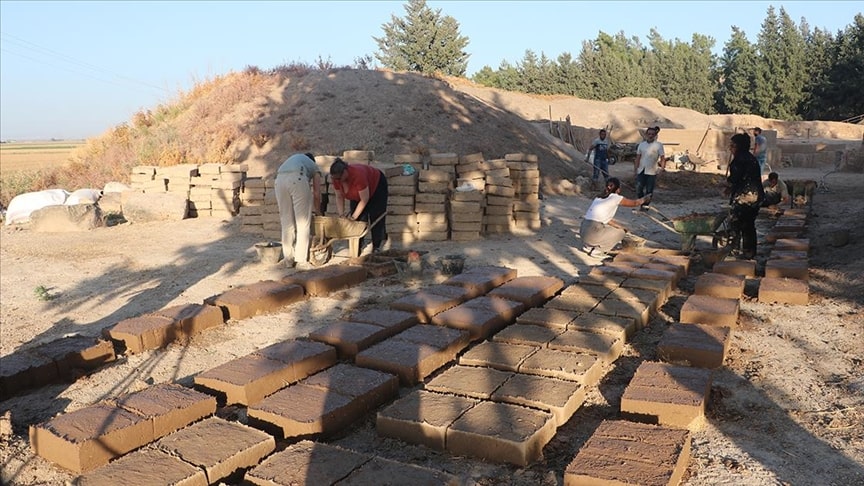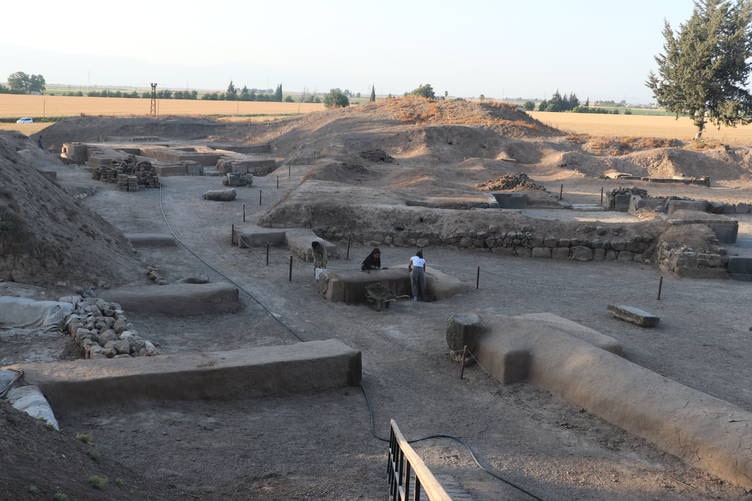
Aççana mound, which hosts the Mushki Kingdom affected by the Kahramanmaraş Earthquake, is being restored using traditional methods
Aççana mound, hosts to the Mushki Kingdom, which was severely damaged by two major earthquakes in Kahramanmaraş in February, is being restored with traditional methods.
The operations at the mound, whose remains are dated back to 3,500 years ago, are being conducted by a 25-member team led by Assoc. Prof. Dr. Murat Akar, the head of the Department of Protohistory and Near Eastern Archaeology at Hatay Mustafa Kemal University.
According to Assoc. Prof. Dr. Murat Akar, the excavation director, some parts of the palace walls in the mound have been damaged due to disasters. He mentioned that archaeological excavations have been ongoing at the site for 20 years, but this season, they will focus more on the repair and preservation of the sections damaged by the earthquake.

Akar emphasized that the procedures at the mound are carried out using traditional methods. He explained that all the structures dating back to the Bronze Age in the mound are made of adobe bricks. To protect and preserve these structures, they produce adobe bricks by mixing soil, straw, and water following traditional techniques. By using these bricks, they cover the damaged areas of the structures to protect them.
📣 Our WhatsApp channel is now LIVE! Stay up-to-date with the latest news and updates, just click here to follow us on WhatsApp and never miss a thing!!
The adobe structures in Aççana were unearthed during excavations in the 1930s, and they have been exposed for nearly a century. To safeguard these structures from rain, erosion, and major disasters, they employ sustainable traditional methods. Akar stated that the current efforts to address the hazardous areas will continue in the following years, forming part of a five-year program. Their goal is to preserve cultural heritage and keep one of the oldest structures of the city’s memory alive.
You may also like
- A 1700-year-old statue of Pan unearthed during the excavations at Polyeuktos in İstanbul
- The granary was found in the ancient city of Sebaste, founded by the first Roman emperor Augustus
- Donalar Kale Kapı Rock Tomb or Donalar Rock Tomb
- Theater emerges as works continue in ancient city of Perinthos
- Urartian King Argishti’s bronze shield revealed the name of an unknown country
- The religious center of Lycia, the ancient city of Letoon
- Who were the Luwians?
- A new study brings a fresh perspective on the Anatolian origin of the Indo-European languages
- Perhaps the oldest thermal treatment center in the world, which has been in continuous use for 2000 years -Basilica Therma Roman Bath or King’s Daughter-
- The largest synagogue of the ancient world, located in the ancient city of Sardis, is being restored











Leave a Reply